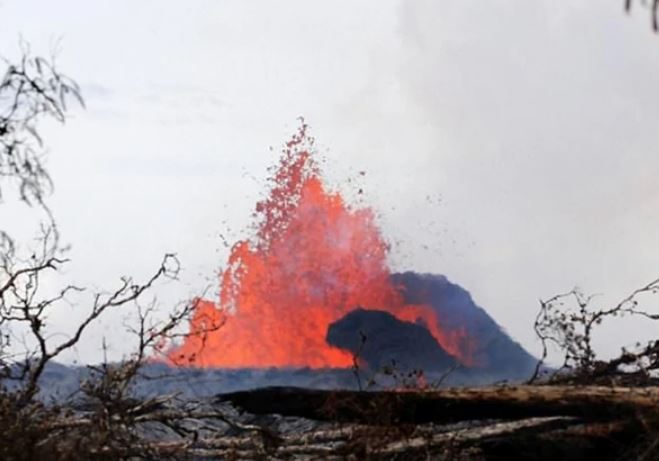In the last few hours, an alert due to the eruption of the Kilauea volcano in Hawaii has kept the paradisiacal state on edge. It began spewing lava again on the Big Island.
Kilauea is one of the most active volcanoes in the world. It has been erupting intermittently for almost two months since it “awakened” on December 23.
The erupting Kilauea volcano in Hawaii: what could happen
The eruption has been taking place at the summit crater of the volcano, inside the Hawai’i Volcanoes National Park. So far, no residential areas have been threatened by the lava.
According to reports, the latest release of molten rock began at 10:16 a.m. this Wednesday, with lava flowing in the bottom of the Halemaumau crater.
Thirty minutes later, a vent spewed lava that reached about 100 meters in height.
This is the ninth episode of eruptive activity since December 23, as reported by the Hawaiian Volcano Observatory. Previous episodes lasted from 13 hours to eight days, with breaks in between.
On the other hand, many people have been approaching the lookouts within the national park to observe the eruption.
What Kilauea is like

Kilauea is located about 320 kilometers southeast of Honolulu, the Hawaiian capital.
It is the most recent and active of the five volcanoes that make up the island. It is also one of the most active volcanoes on Earth.
It emerged from the sea about 70,000 years ago. It is the second most recent volcano formed on the hot spot in the current eruptive center of the Hawaii-Emperor seamount chain.
Throughout its known history, Kilauea has been an active volcano and, except for a brief pause between 1934 and 1952, it has never experienced a prolonged period of rest.
What the authorities are saying
The United States Geological Survey’s Hawaiian Volcano Observatory (USGS HVO) is closely monitoring the volcano’s activity.
 The volcanoes of Hawaii.
The volcanoes of Hawaii.
The eruption is occurring within a restricted area of the national park. The USGS stated that the main hazards include high levels of volcanic gas, especially sulfur dioxide (SO2), which can form volcanic smog known as vog and affect downwind areas.
In addition, light volcanic glass fragments, known as “Pele’s hair,” could be carried by the wind and cause skin and eye irritation.
The area around the Halemaʻumaʻu crater, in the Kīlauea caldera, has been closed to the public since late 2007 due to the instability of the crater walls, the possibility of ground cracks, and rockfalls, hazards that intensify with seismic activity in the region.
Have you already visited our YouTube channel? Subscribe!

